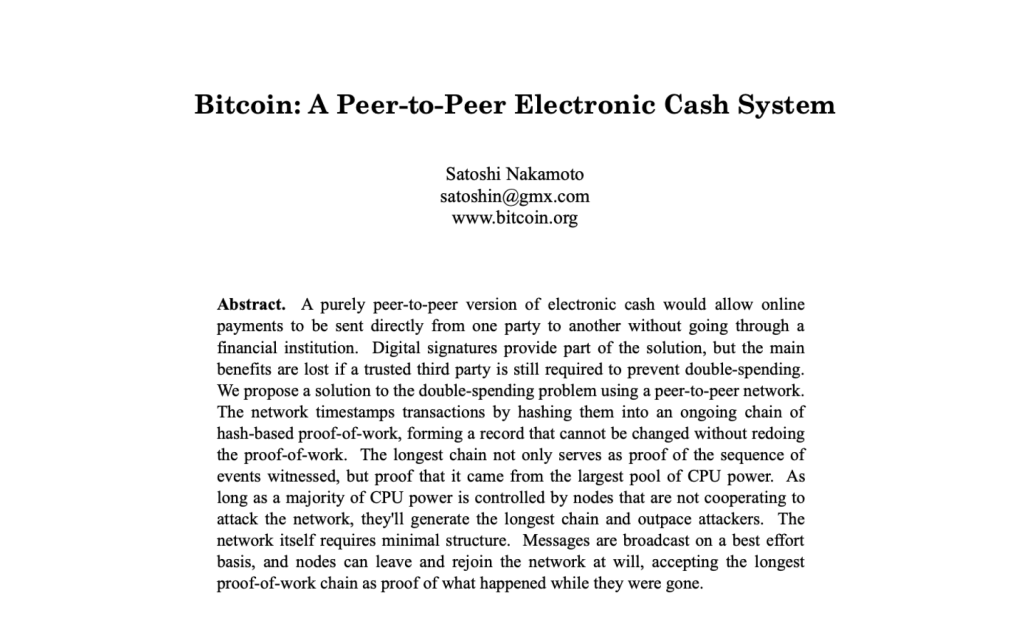Writing a whitepaper is an important step when introducing a new cryptocurrency or blockchain project. It serves as a detailed document outlining the project’s concept, technology, goals, and implementation plan. To help you write a cryptocurrency whitepaper, follow these steps:
- Introduction: Start by introducing your project and its purpose. Clearly state the problem you aim to solve in the cryptocurrency space and explain why it’s important. Use simple language to make it accessible to a wide audience.
- Summary: Provide a concise summary of your project, highlighting its key features and benefits. Explain how your cryptocurrency or blockchain solution addresses the identified problem. Keep this section brief but informative.
- Problem Statement: Elaborate on the challenges your cryptocurrency aims to solve. Clearly define the pain points and limitations of existing systems or traditional financial services. Use relatable examples to make it easy for readers to understand.
- Solution Overview: Describe your cryptocurrency solution in detail. Explain how it utilizes blockchain technology and any unique features it offers. Emphasize the benefits that users will gain by adopting your cryptocurrency.
- Technology Explanation: Provide a simple explanation of the underlying technology behind your cryptocurrency. Explain how blockchain works, emphasizing its key features such as decentralization, immutability, and transparency. Use real-world examples to make it relatable.
- Token Economics: Describe the role of your cryptocurrency’s token within the ecosystem. Explain how tokens are created, distributed, and used. Discuss any tokenomics mechanisms such as staking, burning, or governance. Ensure you simplify complex economic concepts for easy understanding.
- Use Cases: Present real-world use cases and scenarios where your cryptocurrency can be applied. Discuss its potential to disrupt traditional financial systems, facilitate transactions, or enable new decentralized applications. Highlight the benefits for different user groups.
- Roadmap: Outline the milestones and development stages of your project. Provide a clear roadmap of how you plan to achieve your goals. Include a timeline, major deliverables, and key partnerships or collaborations. This demonstrates your project’s feasibility.
- Team and Partners: Introduce the core team members, their backgrounds, and relevant expertise. Highlight any partnerships or collaborations that lend credibility to your project. Build trust by showcasing the experience and qualifications of your team.
- Conclusion: Summarize the main points of your whitepaper, emphasizing the problem, solution, and benefits of your cryptocurrency. Encourage readers to participate in your project or invest in your token. Provide contact information for further inquiries.
When writing a white paper, you have to strike a balance between simplicity and technical accuracy. Aim to make your whitepaper accessible to a wider audience without oversimplifying the technology or concepts behind your cryptocurrency.
What is Bitcoin Whitepaper?
Bitcoin whitepaper is a document published in 2008 by an anonymous person or group of people using the pseudonym Satoshi Nakamoto. It introduced the concept of Bitcoin, the world’s first decentralized cryptocurrency. The whitepaper outlined the principles, technology, and potential of Bitcoin. Here are a few key features of Bitcoin the whitepaper explained:

Peer-to-Peer Electronic Cash System
The whitepaper describes Bitcoin as a system that allows people to send and receive digital money directly to each other without the need for intermediaries like banks. It enables individuals to conduct transactions securely over the internet.
Decentralization
Bitcoin operates on a decentralized network, meaning there is no central authority controlling or governing it. Transactions are verified by a network of computers called “nodes,” and no single entity has ultimate control over the system.
Cryptographic Security
The whitepaper highlights the use of cryptographic techniques to secure transactions and control the creation of new Bitcoins. It explains how public-key cryptography is used to verify ownership of funds and ensure the integrity of transactions.
Proof-of-Work (PoW)
Bitcoin’s whitepaper introduces the concept of the PoW consensus mechanism. It explains how miners compete to solve complex mathematical puzzles to validate transactions and add them to the blockchain. This process ensures the security and immutability of the Bitcoin network.
Limited Supply
The whitepaper states that there will only ever be 21 million Bitcoins in existence. This scarcity is achieved through a predetermined issuance schedule, reducing the risk of inflation and providing a potential store of value.
Transaction Transparency
Bitcoin transactions are recorded on a public ledger called the blockchain. The whitepaper emphasizes how this transparency allows anyone to view and verify transactions, promoting trust and accountability within the system.
Permissionless Innovation
The whitepaper highlights Bitcoin’s open nature, allowing anyone to participate and innovate on top of the protocol. It encourages developers to build applications, services, and financial tools on the Bitcoin network without requiring permission from centralized entities.
Elimination of Double Spending
The whitepaper addresses the challenge of preventing the same Bitcoin from being spent multiple times, which is a common issue in digital currencies. Bitcoin solves this problem by using the blockchain to establish a chronological order of transactions.
The Bitcoin whitepaper laid the foundation for the cryptocurrency revolution and sparked a global movement towards decentralized digital currencies. It presented a vision of a peer-to-peer electronic cash system that operates securely, transparently, and without the need for intermediaries.

For Bitcoin enthusiasts who are looking for a fast way to convert their Bitcoin into cash, Dart Africa offers a seamless solution. We provide a user-friendly platform that allows Bitcoin lovers to easily exchange their assets for cash.





